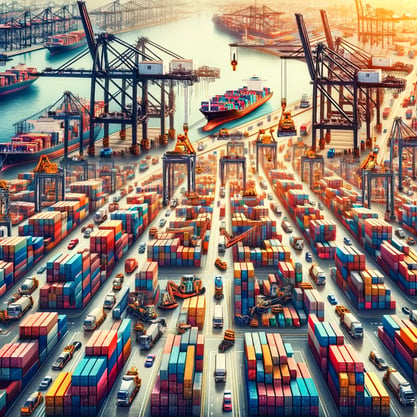Executive Summary
 The period from 2015 to 2023 saw significant and diverse disruptions in global supply chains, each year marked by unique challenges and responses. Starting from trade tensions and cyber-attacks to a global pandemic, and then facing the ramifications of these disruptions in subsequent years, the global supply chain landscape has been both dynamic and strained. Key themes across these years include geopolitical tensions, technological vulnerabilities, health crises, and environmental impacts, all of which tested the resilience and adaptability of supply chains worldwide.
The period from 2015 to 2023 saw significant and diverse disruptions in global supply chains, each year marked by unique challenges and responses. Starting from trade tensions and cyber-attacks to a global pandemic, and then facing the ramifications of these disruptions in subsequent years, the global supply chain landscape has been both dynamic and strained. Key themes across these years include geopolitical tensions, technological vulnerabilities, health crises, and environmental impacts, all of which tested the resilience and adaptability of supply chains worldwide.
2015-2019: Pre-pandemic Disruptions and Geopolitical Tensions
In the pre-pandemic era (2015-2019), supply chains faced significant disruptions mainly due to geopolitical tensions, notably the US-China trade war. This period saw companies grappling with increased tariffs, leading to shifts in manufacturing bases and reconfigured global trade routes. The technology sector, in particular, was at the center of these tensions, with semiconductors and high-tech industries experiencing significant pressure. Cybersecurity emerged as a critical concern, with incidents like the Norsk Hydro ransomware attack highlighting the vulnerability of industrial sectors to cyber threats. Additionally, environmental factors, such as climate change-induced natural disasters, started to gain attention for their impact on supply chain continuity and resilience.
2020: COVID-19 Pandemic Onset and Global Lockdowns
The onset of the COVID-19 pandemic in 2020 marked an unprecedented global disruption, affecting all sectors of the economy. The pandemic exposed the fragility of the "just-in-time" manufacturing model and led to widespread shortages in essential goods, from medical supplies to consumer products. Global lockdowns and travel restrictions severely impacted manufacturing and logistics, leading to a reevaluation of supply chain dependencies and the need for more resilient and diversified sourcing strategies.
2021: Continued Pandemic Impact and Supply Chain Strain
In 2021, supply chains continued to reel under the impact of the pandemic. Challenges such as port congestion, manufacturing delays, and the Suez Canal blockage exacerbated the situation. The year highlighted the critical nature of supply chains in global economic stability and the importance of technological investments, like AI and automation, to improve supply chain visibility and resilience. The disruption also underscored the need for sustainable and socially responsible supply chain practices, as vulnerabilities in labor markets and environmental impacts became more evident.
2022-2023: Recovery Efforts and New Challenges
As the world began to recover from the pandemic in 2022 and 2023, new challenges emerged, including the ongoing effects of geopolitical tensions, particularly the Russia-Ukraine conflict, which affected global energy and food supplies. Supply chains started to adapt through strategies like nearshoring and diversification to mitigate future disruptions. The period also saw an increased focus on digital transformation and sustainability as core components of supply chain resilience, with companies investing in technologies and practices that fostered agility, transparency, and environmental stewardship.
In summary, the evolution of supply chain disruptions from 2015 to 2023 reflects a complex interplay of geopolitical, technological, and environmental factors, with the COVID-19 pandemic serving as a pivotal moment that accelerated the transformation of global supply chains. The era underscored the need for resilience, flexibility, and sustainability in supply chain management, with a clear shift towards more localized, technologically integrated, and environmentally sustainable supply chain practices.





Leave a Comment